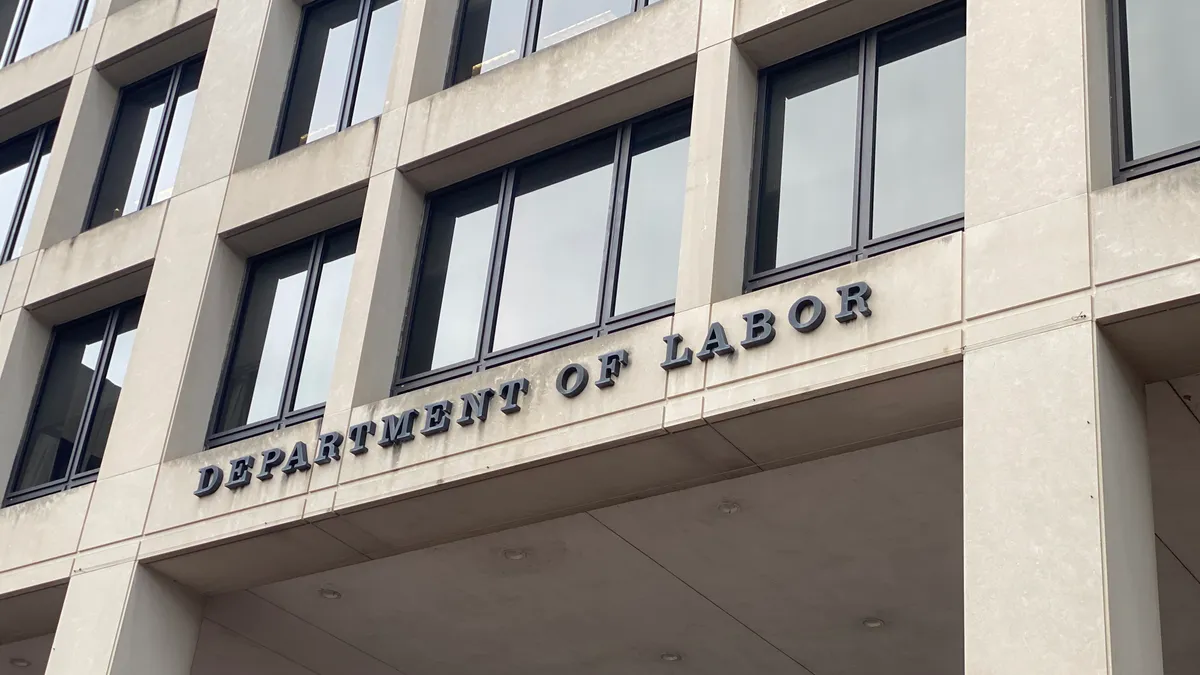Dive Brief:
- The U.S. Department of Labor said Tuesday it will publish a final rule raising the Fair Labor Standards Act’s minimum annual salary threshold for overtime pay eligibility in a two-step process. Starting July 1, the threshold will increase from $35,568 to $43,888 per year. It will then increase to $58,656 on Jan. 1, 2025.
- The changes will expand overtime pay eligibility to millions of U.S. workers, the agency said. DOL’s 2025 threshold represents a jump of about 65% from the Trump administration’s 2019 rule and is slightly higher than the $55,068 mark that DOL proposed in 2023.
- The threshold will automatically update every three years using current wage data — which would next occur on July 1, 2027 — but DOL said in the proposed rule that updates may be temporarily delayed if the department chooses to engage in rulemaking to change its methodology or update mechanism.
Dive Insight:
The rule represents yet another regulatory update for employers, following DOL’s independent contractor final rule and the U.S. Equal Employment Opportunity Commission’s pregnancy accommodation rule. The overtime rule cleared White House review weeks ago, though, and one source told HR Dive at the time that its publication was expected at any moment.
The FLSA’s overtime exemption applies to workers employed as bona fide executive, administrative, professional and outside sales employees, as well as some computer employees. In order for overtime requirements to not apply, employee salaries must meet the regulation’s minimum threshold, currently $35,568, among other criteria.
The first part of the increase scheduled for July 1 follows the process for wage-threshold increases established in the 2019 rule, Jessica Looman, administrator of DOL’s Wage and Hour Division, said during a press call Tuesday. This methodology is based on the 20th percentile of weekly earnings of full-time salaried workers in the lowest-wage U.S. Census region, while the January 2025 increase uses an updated methodology that is based on the 35th percentile.
The first increase in July 2024 is expected to affect approximately 1 million workers, Looman said, while the second increase in January 2025 is expected to affect approximately 3 million workers.
A separate overtime exemption applies to certain highly compensated employees. For these employees, DOL’s rule will increase the minimum salary threshold to $132,964 on July 1, and to $151,164 on Jan. 1, 2025, Patrick Oakford, deputy assistant secretary for policy at DOL, said during the press call.
In all, the department said it considered more than 33,000 public comments on the proposed rule. One of those came from the Society for Human Resource Management, which asked the agency to delay the final rule’s effective date to 2025. SHRM said that a 60-day period between publication and effective date is insufficient for employers to assess and comply with the rule.
“This rule will restore the promise to workers that if you work more than 40 hours in a week, you should be paid more for that time,” Acting Secretary of Labor Julie Su said in a press release. “Too often, lower-paid salaried workers are doing the same job as their hourly counterparts but are spending more time away from their families for no additional pay. That is unacceptable.”
Observers now turn to the federal courts, where challenges to the rule are anticipated. In September, a judge for the U.S. District Court for the Western District of Texas rejected one attempt to strike down the 2019 rule in which an employer claimed that DOL lacked the statutory authority to issue it.
The legal fight also may carry over to Congress, where a Republican representative from Missouri has introduced a bill that would block the new final rule. The bill has not yet received a committee vote.
In the meantime, employer-side attorneys who previously spoke to HR Dive said employers can determine which positions would be affected by the updated threshold, and whether to convert affected employees to hourly, nonexempt status and pay overtime, or raise pay to put them over the threshold.













